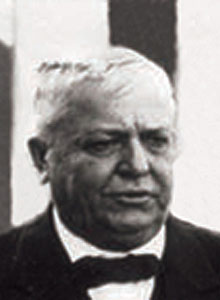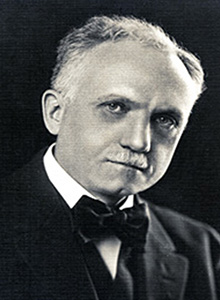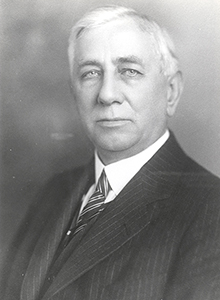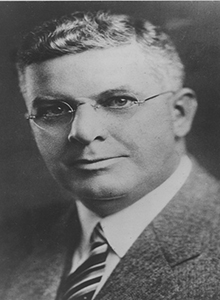
Willis J. Bailey
- Governor, Federal Reserve Bank of Kansas City, 1922 – 1932
- Born: October 12, 1854
- Died: May 19, 1932
When Willis J. Bailey became governor of the Federal Reserve Bank of Kansas City in 1922, it was not the first time he had been referred to by that title. Bailey, the founder of the northeast Kansas community of Baileyville, was elected the state's sixteenth governor in 1902, the culmination of a political career that had already seen him serve two terms in the Kansas legislature and a congressional term.
Born in 1854 in Mount Carmel, Illinois, Bailey came to northeast Kansas to live on farmland owned by his father where, in addition to starting the town, he operated a large livestock operation. In addition to his political career, he founded the Baileyville State Bank in 1895. He returned to banking after leaving the Kansas governor's office, moving to Atchison, Kansas, and becoming managing officer and vice president at Exchange National Bank. He later became the bank's president.
As a banker, he was elected president of the Kansas Bankers Association, which put him in a key position when Congress passed the Federal Reserve Act in December 1913. When federal officials were working to determine locations for the nation's regional Reserve Banks in 1914, Bailey was especially active.
Under his leadership, the KBA and its members were a strong voice in favor of locating a Reserve Bank in Kansas City. Perhaps in recognition of his efforts, in 1914 he was selected to serve on the Bank's first board of directors. After Jo Zach Miller's resignation, Bailey's fellow directors selected him for the job.
As Reserve Bank president, Bailey was known to refer to the Tenth Federal Reserve District as "the bread basket of the world." In a 1932 article about Bailey, The Kansas City Star wrote that he had the ability to "humanize" the Federal Reserve.
"Gov. Bailey took a broad leadership and human understanding to the position," the newspaper said. "He knew Tenth District bankers and the customers in back of them."
Bailey's final years in office were marked by poor health and at least one extended leave of absence. He was forced to retire in January 1932. He died five months later at age seventy-seven. Because of his role in the Bank's founding, Bailey's funeral was among the most historically significant events in Bank history. Among the attendees were several individuals who had been a part of the effort to locate the Bank in Kansas City. Meanwhile, a lengthy list of honorary pallbearers at his funeral included Bailey's successor at the Bank, George Hamilton, as well as Gavin Leedy, who, years later, would succeed Hamilton in the office.
Written by the Federal Reserve Bank of Kansas City. See disclaimer and update policy.





 X
X  facebook
facebook
 email
email